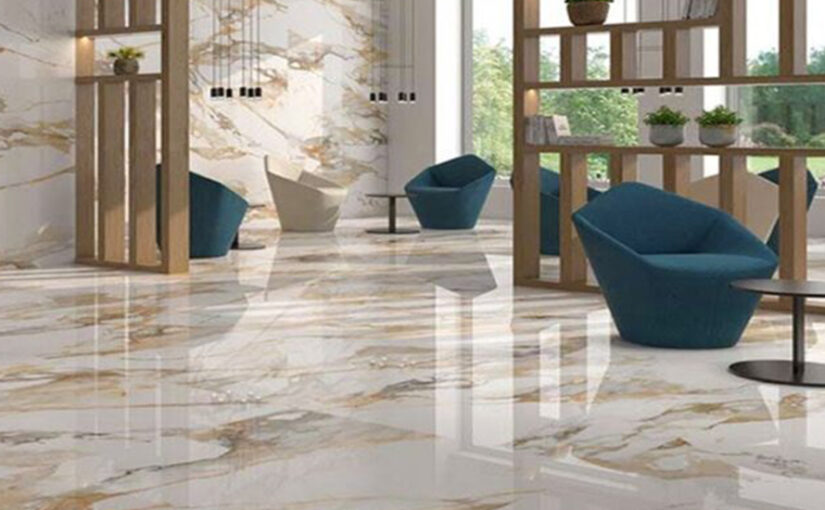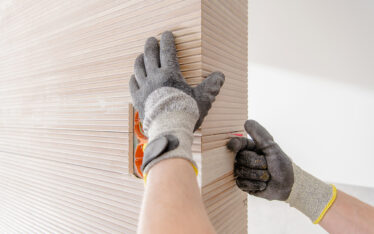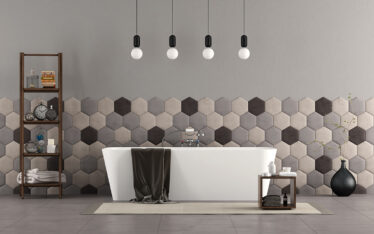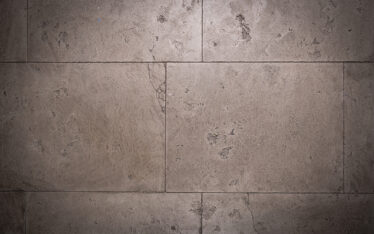Vitrified tiles are highly recommended to counter stains and water seepage in residential and commercial buildings. The use of vitrified tiles has also increased in contemporary interior design due to their aesthetic and functional appeal. Suppose you are building a new house or re-doing your interiors. In that case, vitrified tiles can be a veritable interior and exterior design choice.
So, what exactly makes vitrified tiles so popular?
Vitrified tiles are a type of ceramic tile. The tiles are made by heating a mixture of clay and other materials to a high temperature, producing a dense, hard, and durable tile. Vitrified tiles have a smooth, glass-like finish and come in various colors and designs, making them a popular choice for flooring and wall tiles in homes, offices, and commercial spaces. Vitrified tiles are resistant to moisture, stains, and scratches, and require minimal maintenance.
You can explore an assortment of vitrified tile types, including double-charged ones with a two-tone color scheme or consistent palette across the tile. Moreover, you can also go for soluble salt tiles, which come in various designs, or glazed tiles that have an added sheen.
Since there are several styles and types of vitrified tiles in the market, it can take a lot of work for first-timers to pick and choose. So, we have compiled a list of features to help you choose the best vitrified tile for your use case.
Checking the quality of tiles
Like every other product in the market, vitrified tiles also have several grades of hardness and finishing quality. There are typically 3 grades of vitrified tiles:
- Double Charge Vitrified Tiles: These tiles have two layers of colored glaze and are known for their high-quality finish and durability.
- Full Body Vitrified Tiles: These tiles have the same color and design throughout the entire tile, making them less prone to color fading or wear and tear.
- Soluble Salt Vitrified Tiles: These tiles have a more natural and rustic look and are made with a unique manufacturing process that involves using salt to produce a unique design on the tile’s surface.
Note that the exact grades and terminology of vitrified tiles can vary between manufacturers. To find out which grade and finish are best suited for your needs, it’s advised that you visit a tile shop nearby. Also, always buy products from reputed brands to avoid problems like chipping and breaking during installation. At Katta Ceramics, we offer a veritable selection of branded vitrified tiles, including floor tiles and wall tiles.
Read Also: Ceramic Or Vitrified Tiles, Which One Is Better For Living Room?
Picking up the right tile size
There are a few factors to consider when selecting the size of tiles for your floor or walls:
- Room Size: Larger tiles make a small room appear larger, while smaller tiles can make a large space feel cozier. So, keep that in mind while you pick vitrified tiles for home use.
- Traffic Flow: For high-traffic areas such as entryways, kitchens, or bathrooms, consider using larger tiles to minimize the number of grout lines and make cleaning easier.
- Style: The size of your tiles can greatly impact the overall look and feel of your space. Larger tiles are a popular choice for a modern, minimalist look. In comparison, smaller tiles can give a traditional and busy feel to the interiors.
- Functionality: Also, consider the purpose of the room when choosing tile size. For example, smaller tiles are often used in shower stalls or around bathtubs for better grip and safety.
- Wall Height: When picking tiles for walls, follow this simple rule, use larger tiles for taller walls and use smaller tiles for shorter walls.
- Minimal wastage: When selecting the size, ensure there will be little waste during installation. The typical dimensions for vitrified tiles are 600×600, 800×800, and 1000×1000 millimeters.wa
It’s essential to consider these factors and take accurate measurements of your space before making a final decision on tile size. Additionally, you can consult with a Katta Ceramics tile specialist who can help ensure that you select the correct size tiles for your specific needs and preferences.
Calculating the number of tiles needed
To calculate the number of wall tiles or floor tiles needed for installation, follow these steps:
- Measure the length and width of the room or surface where you’ll be installing the tiles.
- Multiply the length by the width to get the total square footage of the area.
- Measure the length and width of one tile to get its square footage.
- Divide the total square footage of the area by the square footage of one tile to get the number of tiles needed.
- If the result is not a whole number, round up to the nearest whole tile.
- Tiling projects typically result in some waste due to cuts and irregular shapes, so it’s a good idea to add 10-15% extra to your total square footage to account for this.
It’s also a good idea to order a few extra tiles on hand in case of breakage or future repairs. Finding an exact match for discontinued or out-of-stock tiles can be challenging. Getting the number of tiles needed for a room or wall right will also help you calculate the budget you need to allocate for tiling.
Checking the technical specifications of vitrified tiles
It may be hard to believe for someone buying tiles for the first time, but tiles, too, come with technical specifications. All branded tiles are specified by the following factors:
- Dimensions: Verify the size, thickness, and dimensional accuracy of the tiles you have shortlisted.
- Absorption: Vitrified tiles should absorb at most 0.5% of their weight in water. Most branded vitrified tiles have a low water absorption rate, typically less than 0.5%, to ensure they are resistant to moisture.
- Hardness: Vitrified tiles are intended to be hard and durable, with a high resistance to wear and tear. Check the hardness rating using a standard test such as the Mohs hardness scale.
- Slip Resistance: If you plan to install vitrified tiles in a high-traffic area or a wet environment, it’s important to check their slip resistance rating. Look for tiles rated as anti-skid or have a high coefficient of friction to ensure user safety.
- Strength: Check the strength and load-bearing capacity of floor tiles to ensure they can handle the weight of heavy furniture or foot traffic.
- Chemical Resistance: Vitrified tiles are also resistant to chemicals, including acids and alkalis. Check the manufacturer’s specifications about the ability of tiles to prevent damage or staining.
- Colorfastness: Most importantly, check the colorfastness of the tiles to ensure that they won’t fade or discolor over time.
- Warranty: Finally, check the manufacturer’s warranty to understand what is covered in case of defects or issues with the tiles.
At Katta Ceramics, we offer branded vitrified tiles which stay true to all of the above parameters and come with a manufacturer warranty.
Selecting the right design and color of tiles
Vitrified tiles are available in a multitude of colors and patterns available for tiling. With the development of digital printing technology, tiles can mimic the appearance and texture of natural materials such as wood, marble, and many kinds of genuine stone. You can also combine different types of tiles to make an intriguing interior scheme. When selecting the pattern and color of tiles, here are a few factors to consider:
- Room Usage: Consider the function of the room where the tiles will be installed. For example, in a bathroom or kitchen, you may want to choose a neutral or light color to minimize staining.
- Interior Design: Consider the overall style and color scheme of your home or space when choosing tiles. A bold pattern or color can make a statement, while a neutral tile can blend in with the background.
- Lighting: Consider the amount and type of natural and artificial light in the room. Some colors and patterns can look different in different lighting conditions.
- Maintenance: Consider the amount of maintenance you are willing to do. Bold patterns and bright colors show dirt and stains more easily than neutral colors.
- Durability: Choose durable tiles that can handle the wear and tear of daily use.
- Budget: Finally, consider your budget. Some tile patterns and colors may be more expensive than others.
It’s always a good idea to look at samples of the tiles in the room where they will be installed to get a better sense of how they will look and make a final decision. Additionally, consulting with a Katta Ceramics tile specialist can help you select the right pattern and color of tiles for your specific needs and preferences. To prevent color mismatch, we always advise you to buy tiles in a single lot as there may be subtle color differences between different batches.
Selecting an appropriate finish for tiles
Vitrified tiles come in various finishes. Choosing the right finish for your use case also requires certain considerations, such as:
- Gloss: Gloss tiles have a high-shine finish that reflects light, making them ideal for creating a bright and spacious look in a room. They are also easy to clean but may show scratches and stains more quickly than other finishes. Since they tend to become slippery when wet, experts would not recommend choosing glossy surfaces for use in places such as the kitchen and bathroom.
- Matte: Matte tiles have a flat, non-reflective finish that provides a more understated look. They are less prone to scratches and stains but may be more challenging to clean than gloss tiles. Matte finishes are slip-resistant, non-reflective, and do not readily reveal stains or grime. For kitchens and bathrooms, slip-resistant tiles are ideal as they lessen the danger of slipping in wet environments. Choose tiles with a coefficient of friction (COF) greater than 0.6 for best safety.
- Lappato or Satin: Satin tiles have a semi-gloss finish that combines the best of both gloss and matte finishes. They are more forgiving than gloss tiles and provide a subtle sheen without being too reflective. These tiles have a greater sheen than matte finish tiles and are slip-resistant.
- Textured: Textured tiles have a rough surface that provides additional grip, making them ideal for wet areas such as bathrooms or kitchens. They also add an interesting visual texture to a room.
- Structured: Structured tiles have a raised surface that creates a unique visual texture. They can also help to hide scratches and stains.
Endnotes
Vitrified tiles are becoming more and more popular, and why not? They are incredibly durable, capable of withstanding heavy foot traffic, inexpensive, easy to maintain, and resistant to scrapes, stains, and acids. For these reasons, they are becoming an increasingly popular replacement for natural flooring materials such as marble and granite. The tips above will help you choose the optimal tiling approach for your rooms. For more information about floor and wall tiles, you can always contact us at Katta Ceramics.







